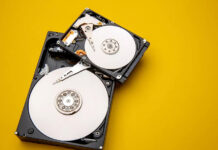Our external drive is no longer viewable on Windows? Let’s see how to fix the problem and access the files again.
Corrupted or unreadable external drive on Windows: how to fix
Using an external USB drive on a Windows PC, we will be able to save all our personal files in a safe space and correctly perform backups of the operating system, so that we can take the files with us and open them even from another computer. Unfortunately, even external drives can run into reading problems on Windows, showing errors that are difficult to interpret for novice users.
In the following guide, we will show you the procedures to follow to solve all the problems we can run into when we connect a damaged or unreadable external drive on Windows, so as to access personal files and backups carefully stored on the external storage media again. Although the methods seen below are designed for external USB hard drives, we can also apply them to USB sticks and (limitedly) also to non-functioning internal drives.

Check the USB connection
The first method we can apply to try to read a damaged USB external drive is to carefully check the USB cable used to connect to the computer. Even if it is whole or without visible damage, a little damage to the internal threads is enough to make it impossible to read the disk at the hardware level. For emergencies of this type, it is advisable to keep the emergency USB cables specific for external drives at hand, such as those listed below:
So we buy all the cables seen above and, in case of an unreadable disc, we try to use one of the cables seen above to exclude any type of hardware damage to the original cable wires.
Change USB port
If even changing the cable does not improve the situation, the second method to solve is to change the USB port, using one of the other ports on the computer body. On fixed PCs it is not difficult to find a new USB port to try, while on laptops the number of ports present could be reduced (2 or 3 USB ports): in this case, it is advisable to equip ourselves with a USB Hub to expand the port that is definitely working
To proceed, connect the HUB to the only functioning USB port, then connect the external disk to one of the HUB ports, so as to be able to access the files stored in it.
Update and uninstall USB drivers
If none of the previous methods has solved the problem, we will have to start using the “hard way” to force Windows to read the disk. First, we connect the non-working disk to a USB port on the PC, right-click on the Windows Start menu, open the Device Manager menu, expand the USB Controller item and identify the Controller Host and USB Root Hub items.
Press the right button on both items (one at a time), press on Properties, go to the Driver tab and use the Update driver or Uninstall driver buttons, depending on the severity of the problem. After the change, we restart the PC (using the PS / 2 keyboard shortcut, the touchpad, or a PS / 2 mouse if necessary, since the USB peripherals will not work) to make the changes effective and thus start the installation from scratch. USB driver.
After installing this program we connect the unreadable disk to the computer, start Recuva and select the in-depth recovery, taking care to indicate the external disk as the source of recovery. Once the process has started, we wait a few hours leaving everything on: with a little luck we will recover all the files still accessible from the file system, even if damaged.
Correct and format the disk
After having recovered all the possible files we can try to restore the disk operation by formatting it directly from the computer. To proceed, connect the disk to the PC, right-click on the Start menu and finally open the Disk Management menu.
Once the window is open, we identify the damaged or unreadable disk among those in the list or in the lower pane, right-click on it and use the Format item to format the entire disk with a new file system, choosing NTFS when requested.
Still pressing the right mouse button on the unreadable disk we can start a Checkdisk check by clicking on the Properties item, opening the Tools tab, and clicking on the Check button.
Conclusions
Did none of the methods seen in this guide work? In this case, the disk has suffered serious hardware damage and we can no longer use it, in addition to having lost any files that may be present on it. For this reason, we always recommend always have a backup copy of vital files (for work or for necessity)


